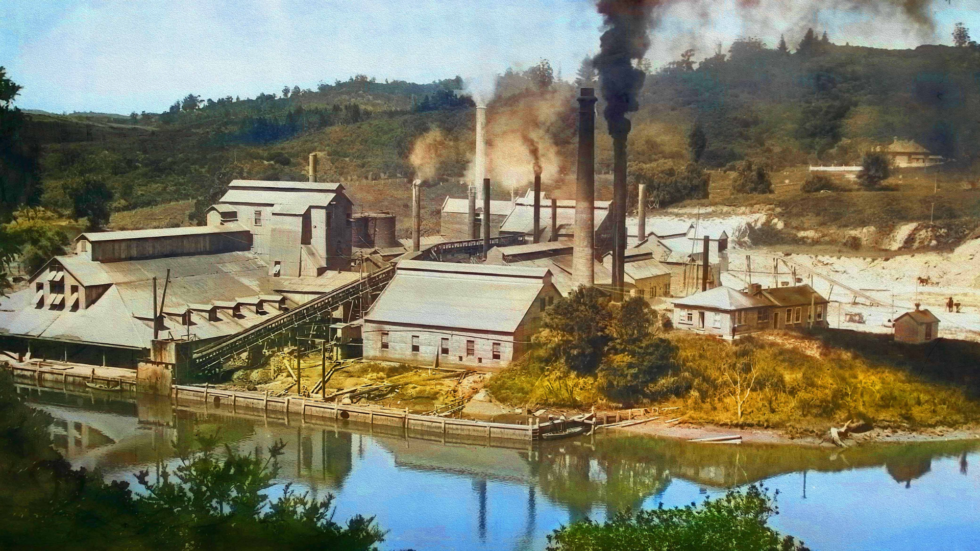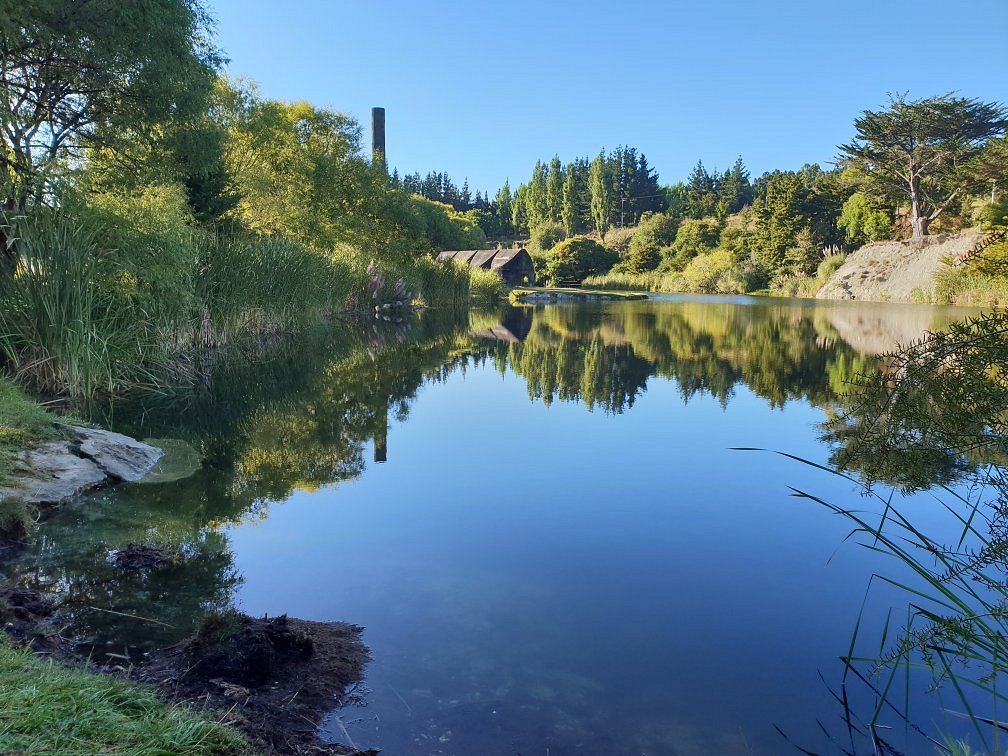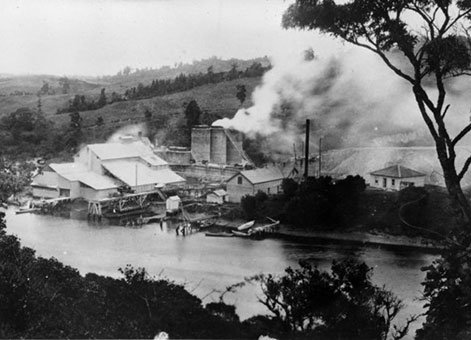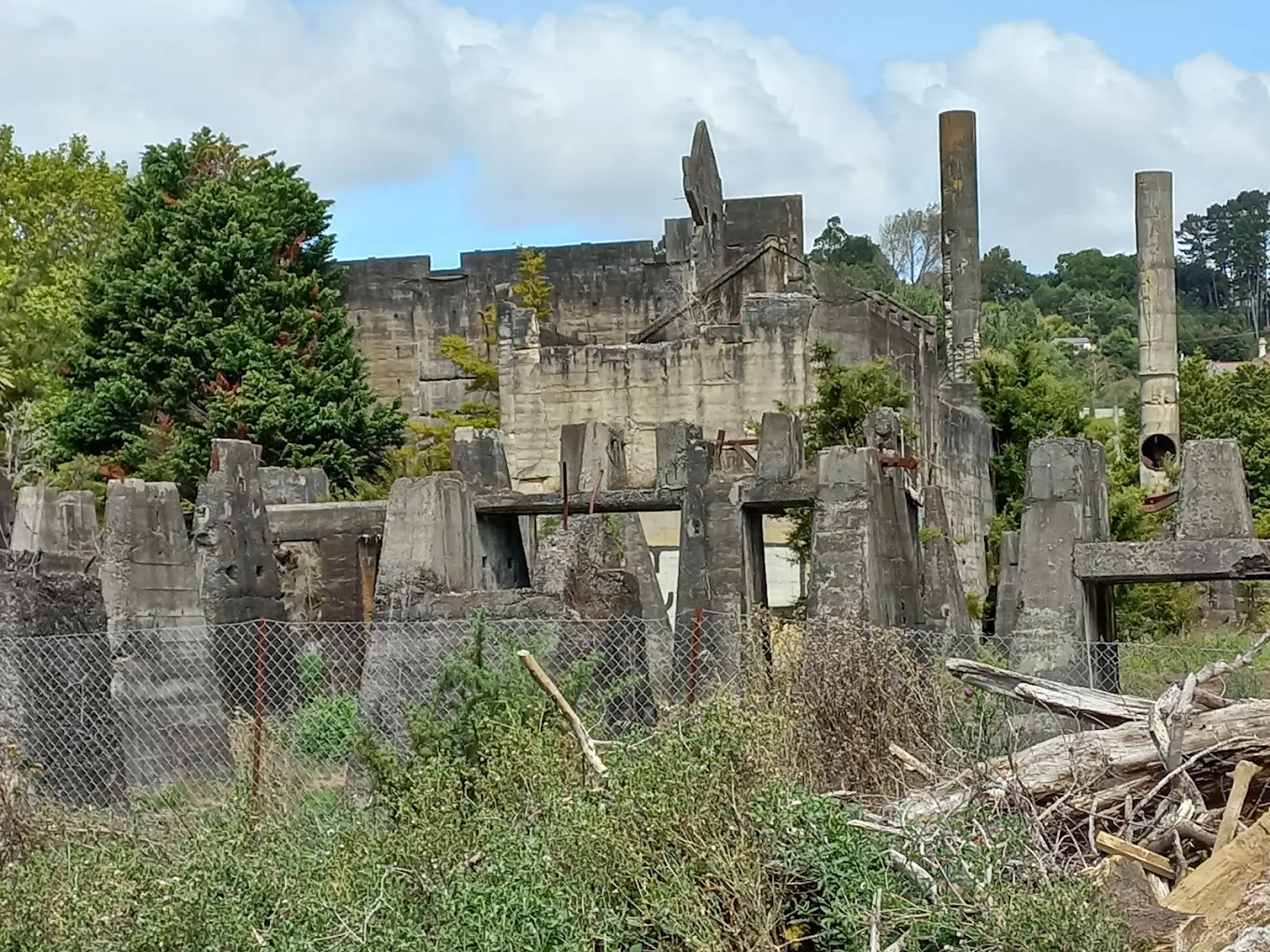Crumbling Icons
Matakana Coast App
05 August 2025, 8:46 PM
 The Story of Warkworth Cement Works
The Story of Warkworth Cement WorksNestled along the Mahurangi River just south of Warkworth, the ruins of the old Wilson's Cement Works including the iconic chimneys are slowly succumbing to time. As local chatter builds following a Facebook post, the community is grappling with how best to memorialise a once thriving landmark before it vanishes. It was a destination.

The Birth of an Industry
Founded in the 1880s by Nathaniel Wilson and his brothers, Warkworth was home to the Southern Hemisphere's first commercial Portland cement plant Nathaniel, a Glasgow immigrant turned shoemaker turned industrial pioneer, began by experimenting with local limestone and river shells to perfect cement that would help build Auckland's infrastructure
By around 1903, new American rotary kilns and grinding mills were installed, and output surged employing up to 180 workers by 1910, and supplying notable projects including Grafton Bridge and Queen’s Wharf

Community and Labour Legacy
Local historian records at the museum recount both pride and struggle. Worker stories include union action, strikes in the early 1910s, and even dismissals over minor matters, yet many employees remained loyal to the Wilson family management over time The museum continues to collect family histories, photos and oral accounts from descendants of workers
Decline, Abandonment and Reinvention
Despite expansion, by 1918 Wilson’s had merged into a larger Portland Cement company centred in Whangārei. Warkworth ceased cement production by 1926–29, transitioning to lime before closing completely
During World War II, American servicemen used the derelict site for demolition training, further damaging its structure
As roads improved, reliance on river transport diminished, and Warkworth shifted from an industrial hub to a riverside service town
Museum Exhibition & Local Historians
In late 2023, Warkworth Museum opened a dedicated “Wilson Cement Works” exhibition, featuring a detailed timeline, artefacts, photographs (some taken as recently as 2025 in a museum photo competition), diaries, and even a large 3D model of the works site. The display includes commentary from the local Cement Works Conservation Trust about future restoration possibilities https://warkworthmuseum.co.nz/wilsons-cement-works
A Facebook Post Sparks Renewed Debate
Recently, a local resident posted photos of crumbling brickwork and damaged chimneys on a community Facebook group, drawing attention to collapsing masonry and safety hazards. The post quickly prompted divided responses—some urging removal for public safety, others passionately defending the chimneys as priceless links to Warkworth’s heritage and identity.

Preservation vs Safety: The Current Trade‑Off
With vandalism and structural degradation now visible, the Conservation Trust has warned that the chimneys are at risk of collapse and injury from graffiti and climbing attempts . The Trust’s strategic goals include stabilising these at-risk structures, enhancing fencing, creating safe walking routes, interpretive signage, and possibly viewing platforms
Heritage New Zealand recognises the site as a Category 1 historic place, and it is registered with the NZ Archaeological Association, underscoring its national and international importance https://www.heritage.org.nz/list-details/82/Listing
Conclusion
The ruins of Warkworth's Cement Works are more than just crumbling bricks and rusting iron they embody industrial ambition, regional growth, and countless personal stories. The community’s recent online activity reflects both concern and affection. With local historians, the Museum, and community groups engaged, now may be the time to craft a future that honours this heritage. Stabilisation, interpretive storytelling, and protective access could transform the site into a meaningful public asset rather than letting it vanish altogether.
ARTS & CULTURE
ATTRACTIONS



